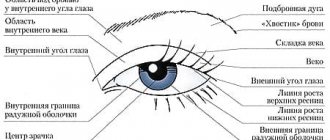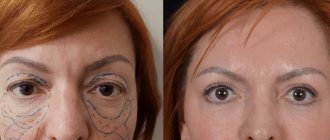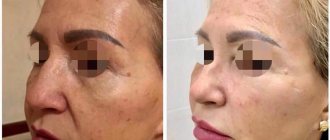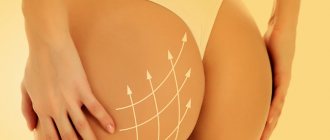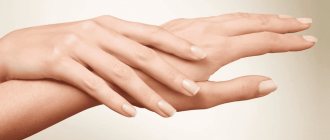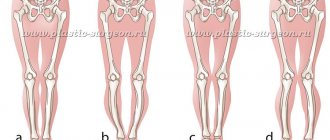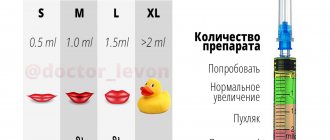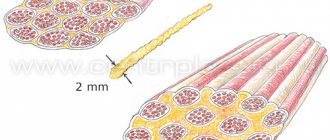- home
- Lipofilling
- Facial lipofilling in a clinic in Moscow
Facial lipofilling is a popular procedure for correcting appearance and rejuvenation. The uniqueness of lipofilling is that it is a volumetric method. The transplant replenishes age-related volume loss in certain areas, providing aesthetic correction of appearance and rejuvenation of surrounding tissues due to the high content of growth factors in adipocytes. The essence of the procedure is to transplant the patient’s fat tissue into the areas requiring correction.
The patient underwent complete facial lipofilling, with correction of the area of the lower eyelids, lips, nasolabial triangle and skin rejuvenation using the nanofat procedure.
Go to photo gallery
Benefits of lipofilling
— Lipofilling provides deep rejuvenation and correction of appearance. — Allows the use of the body’s own tissues, which completely eliminates the risk of allergic reactions or rejection. — Lipofilling is a minimally invasive and minimally traumatic procedure.
Correction zones
- Lips. Procedures to enlarge and reshape lips are now at the peak of popularity. However, correction with gels has to be repeated constantly, but lipofilling will only need to be done once. This is especially true if you do not want to increase the volume of your lips, but would not mind returning them to their former juiciness.
- Dark circles under the eyes. “Dips” and dark circles under the eyes are usually difficult to correct, but lipofilling easily copes with this task: in addition to replenishing volume, fat transfer leads to a noticeable improvement in the quality of the skin.
- Cheeks and cheekbones. The drooping of the tissues of the middle zone of the face leads to the appearance of jowls and deep nasolabial folds, blurring the contours of the lower jaw. To return a clear contour to the oval of the face, you will need to uniformly inject fat into the recessed areas.
Point injections smooth out nasolabial folds, nasolacrimal depressions, “dips” in the cheekbones and temples, create a gentle oval on thin, pointed faces, and improve the relief of the neck and décolleté. Lipofilling is absolutely indispensable for rejuvenating the hands when you need to smooth out protruding veins and tendons.
What is liposculpture
The concept of liposculpture is mainly associated with body enhancement. However, your own fat is becoming an increasingly popular plastic material for “sculpting” the face - improving its proportions and pronounced rejuvenation.
If in the case of silhouette modeling we are usually talking about macrolipofilling
(using quite significant volumes of adipose tissue), then
microlipofilling
and
nanolipofilling
. The first is aimed at filling deep wrinkles and recreating missing volumes. The second task is biological rejuvenation of the skin, improving its quality (elastic properties, color, texture).
Lipofilling is readily used in combination with surgical facelift. First, through surgical intervention, ptosis of soft tissues is removed (by excision, moving them to a higher position), and then the architecture of the face is modified with injections of autologous fat. The main arguments in favor of lipofilling (as opposed to contouring with fillers) are the complete biocompatibility of one’s own fat with tissues, the long duration of the effect obtained, the ability to introduce a significant volume of natural filler, and to correct relatively large areas. However, each technique has its own characteristics, and volumetric modeling with fillers does not lose its relevance at all. Let us add that lipofilling is a technology that surgeons, not cosmetologists, work with.
Benefits of lipofilling
The main advantage is that only the patient’s own fat cells are used for transplantation. And this eliminates the possibility of rejection, allergic reactions and other complications associated with the introduction of foreign products into the body. Other advantages of lipofilling include:
- lasting results after 1.5-2 months after complete engraftment of cells (according to statistics, 70-80% of transplanted tissues engraft forever);
- beautiful proportional contour;
- if desired and aesthetically necessary, the procedure can be repeated;
- Using the technique of transplanting your own fat cells, you can not only increase your shape, but also at the same time get rid of excess fat deposits in problem areas.
Lipofilling is often combined with plastic surgery. This combination allows you to get the most natural rejuvenation result. And if you want not only to restore volume to the tissues, but also to significantly improve the quality of the skin, you can combine the technology of lipofilling with nanolipofilling - in this case, the procedure will not only restore the visual attractiveness of the face, but will also have a powerful rejuvenating effect literally at the cellular level.
Who performs facial lipofilling surgery?
Grishkyan David Rubenovich , certified plastic surgeon, Doctor of Medical Sciences, full member of the Society of Plastic Reconstructive and Aesthetic Surgeons of Russia. Member of the American Academy of Facial and Reconstructive Surgery (AAFPRS), full member of the European Society of Rhinology (ERS) Certified as a plastic surgeon (new type).
David Rubenovich is the founder of lipofilling in Russia. He is the author of his own method of facial lipofilling, which allows for up to 95% survival rate of fat autograft. He has more than 11 years of scientific and practical experience in lipofilling, made more than 35 reports at international scientific congresses and symposia on the topic of lipofilling, has publications in scientific journals, and is an international consultant on the topic of lipofilling.
Rehabilitation period after lipofilling
Rehabilitation after facial liposculpture is very comfortable and short. It can be characterized by slight swelling and hematomas in the area of harvesting and implantation of adipose tissue for 6-8 days from the date of surgery. Final rehabilitation occurs after 4-6 weeks.
IMPORTANT!
- Lipofilling has virtually no contraindications; your own fat is not rejected by the body and does not cause allergies, which makes the lipofilling procedure not only effective, but also safe.
- The patient's adipose tissue is a real elixir of youth! Your own fat, restoring lost volumes, becomes an invaluable source of your own stem cells, which are of great importance for maintaining youthful skin.
- Lipofilling is perfectly combined with any surgical methods of facial rejuvenation, allowing you to achieve the most natural and long-term rejuvenating effect.
Where does fat come from for facial lipofilling?
Ideal areas are the inner thigh, knee area, stomach, outer thigh. These areas with the most stable fat are “fat traps”. But also from those areas that the patient wants to correct.
There are no stitches after lipofilling; the holes are closed with flesh-colored strips, which do not interfere with immediately assessing the result.
As a result, we guarantee:
— No lumps or compactions; — High degree of fat survival; - Lifelong results.
What percentage of fat survives after lipofilling?
Even 10 years ago, at plastic surgery conferences there were very active discussions about the percentage of fat engraftment: one part of the surgeons claimed that the engraftment rate was about 10-20%, the second - about 50%, the third - up to 70%. And each of them was actually right. The problem was that each doctor’s method of collecting and injecting fat was different.
Fat grafting seems to be a fairly simple plastic surgery at first glance, but in fact the fat transfer process has a lot of nuances, which subsequently affect the percentage of engrafted fat:
- Incorrect fat intake. If you introduce too much solution at the liposuction stage (which makes fat collection easier and bleeds less), then the percentage of fat cells per ml of the injected component will be much less, and accordingly the engraftment result will be worse.
- Using a centrifuge after fat collection. Nowadays, the use of a centrifuge is not recommended, since it separates fat cells (adipocytes) from stem cells, which end up at the bottom along with the solution and then merge, which also leads to a lower percentage of engraftment.
- After collecting the fat and placing it in a container, it is extremely important to stir it! If this is not done, the fat is divided into fractions and quickly, literally in 2 minutes it is already fragmented: at the top - oil, in the middle - fat cells, at the bottom - blood. For example, if a nurse who gives a ready-filled syringe to the doctor took one portion from the bottom, where there will be blood, and took the second portion from the middle, where there are a lot of fat cells, then naturally the result after administering the 1st portion will be almost unnoticeable.
- Bolus administration. If you inject fat with a thick cannula, as a bolus, you will get a large ball and naturally there will be a large percentage of fat cells that simply do not contact living tissue and therefore cannot take root. Fat needs to be injected in micro portions, and even with a thin cannula; this is very painstaking work. A thin millimeter cannula makes microchannels and with each pass we introduce no more than 1/20 of one cube. Imagine the difference of 1/20 of a cube or 10 cubes at once with a bolus injection. Doctors often sin with bolus injection, who perform several operations in one cut (for example, rhinoplasty + liposculpture) in order to save time. refilling the area under the eyes, cheeks and cheekbones
Fruits of progress
The first training course on lipofilling was organized in 1998 in France, in Marseille, at the same time the term “liposculpture” was introduced into professional use and indications for lipofilling in plastic surgery were defined. One of today’s priority approaches to the resource of one’s own adipose tissue is breast plastic surgery. This may be a purely aesthetic decision: correction of slight asymmetry; injection of autologous fat along with the installation of implants to give the breasts the most natural appearance... Or it can be a reconstructive operation - restoring the shape of the breast after a mastectomy.
Nowadays, the technique of taking fat from the donor area (for example, from the abdomen or knees) has been radically improved. To carry out the manipulation carefully - while maintaining the integrity of fat cells, without damaging nerves and blood vessels - special devices have been developed.
How long does it take for the fat to take root and when can you see the final result?
Engrafted fat is already present a month after lipofilling. But there are some fat cells that have not yet taken root as well. The entire metabolic process of engraftment and utilization of destroyed fat ends by 6 months and then we can see the final result. As for facial lipofilling, the result can be seen even earlier, because there is a good blood supply and small volumes of injection, and buttock lipofilling - no earlier than 6 months. From my experience, on average, 50% fat survives, so during lipofilling, you need to deliberately introduce excess fat, more than necessary, given that the volume of fat will decrease.
To prove the effectiveness of lipofilling, I can say that in Brazil and Colombia this is operation No. 1. Patients (often at a young age, so there is no sagging skin) have fat taken from the waist in a circle and injected into the buttocks on average 1-1, 5 liters each. And after 2-3-4 years, no one says that the buttocks have become much smaller. If fat had not taken root so massively, this technique would have been abandoned long ago. But there are also dissatisfied patients, to whom the fat was injected either poorly, or, on the contrary, it was too much (when a lot of it was injected), these are the 2 main problems of lipofilling.
Will live!
The issue of maximum survival of transplanted fat remains one of the key ones. Thus, the discovery that adipose tissue contains mesenchymal stem cells
, became an impetus for the development of technologies for preparing a fat graft enriched with stem cells. It is believed that it not only takes root very well, but also promotes true skin rejuvenation. Surgeon Roger Khoury, practicing in Miami, invented a special system of external vacuum expansion of breast tissue - when a special silicone “bra” is put on the chest, which stretches the skin. This increases the area of the recipient zone and again increases the survival rate of the fat graft. The practice of engrafting autologous fat treated with one’s own PRP blood plasma is also successful...
Analyzing various methods of reliably “rooting” autologous fat on new soil, let us pay attention to this point: the better the blood supply in the recipient bed, the more reliably the displaced adipose tissue is established in it.
How to perform breast augmentation using your own fat
The operation consists of two main stages. First, the surgeon removes the required amount of fat using liposuction.
After this, the resulting adipose tissue is prepared. It must be cleared of blood and destroyed cells. Next, the purified fat is injected into the breast area through small punctures.
The operation lasts several hours. It can be performed under either local or general anesthesia.
The result after lipofilling is noticeable immediately. However, it takes several months for it to fully take hold. During this period of time, the swelling subsides, part of the transplanted fat is absorbed, and the breast takes on its final appearance. The recovery period is easy. During rehabilitation, it is necessary to limit physical activity, avoid going to the sauna, swimming pool, solarium, and follow other recommendations of the surgeon.
Complications after surgery may include swelling, hematomas, loss of skin sensitivity, and asymmetry of the mammary glands. Some women experience complete resorption of the transplanted tissue and, as a result, no effect from lipofilling.

